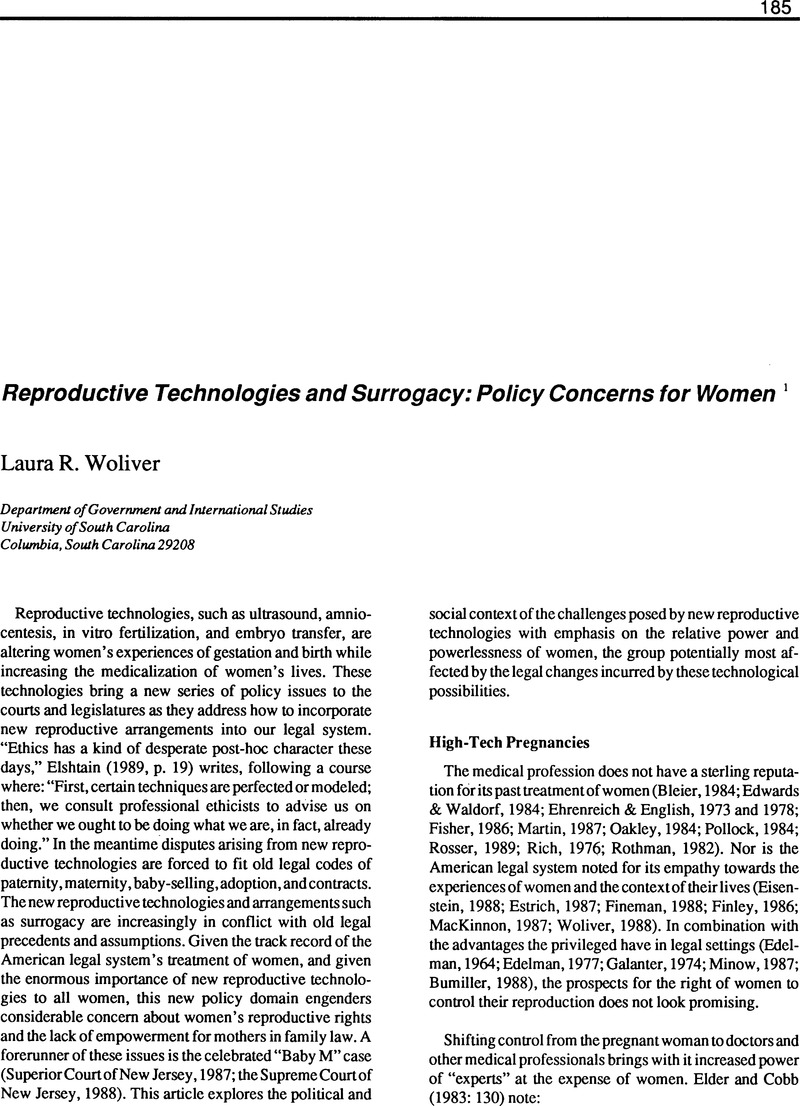Crossref Citations
This article has been cited by the following publications. This list is generated based on data provided by Crossref.
Woliver, Laura R.
1991.
The influence of technology on the politics of motherhood.
Women's Studies International Forum,
Vol. 14,
Issue. 5,
p.
479.
Woliver, Laura R.
1996.
Policies to Assist Pregnant Women and Children Should Include a Complete Assessment of the Realities of Women's Lives.
Politics and the Life Sciences,
Vol. 15,
Issue. 1,
p.
75.



